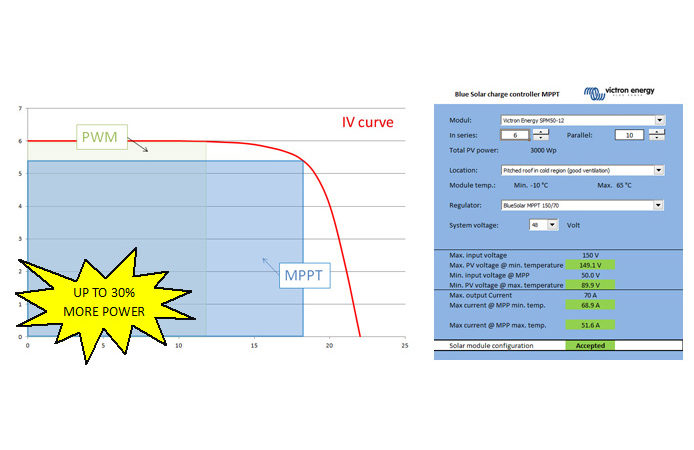It's multiple things.
1: How much energy you collect with the panels
2: How much of that energy the MPPT can accept/convert
3: How much of the accepted/converted energy the charge controller can push to the batteries.
4: How much energy the batteries can safely absorb over a period of time.
For example:
If you produced 8000W and got exactly that much all the way through the MPPT to the charge controller and assume the charge controller can convert 100% of that energy to 48v for battery charge, you're talking about 166 amps. (8000/48=166).
6x 100 amp 48v batteries makes for a 600amp battery bank. Pushing 166 amps to your bank would typically be evenly distributed to all 6 batteries at about 27.6 amps per battery.
If each battery was 100 amps and completely empty, it would take about 3.6 hours at a constant rate of 27.6 amps to charge the battery from zero to 100 amps.
There are a lot of oversimplifications I provided, like the fact that you never run your batteries to zero, typically 20% floor maximum for LifePoE , so technically you're starting with the battery already at 20 of 100 amps, which means the charge time would be less. Assuming 100% efficiency and 100% capacity for all that 8000 watts to be passed strait to the batteries, which is never true, the panels don't perform at 100%, the MPPT doesn't perform at 100%, the inverter needs the power to make power and the charge controller never 100% converts all the energy it takes in, it's just not how it works, each component needs some energy or has some loss in it's role.
As the other posters have mentioned, a .25C rate is preferable for most consumer-grade 100amp 48V batteries. What is a C rate you might ask.. simple. it's basically how much power you're pushing into the battery divided by what the battery's maximum is.
For example, a 100 amp battery that can receive/push 100 amps charging with 27.6 amps is exactly .27C. Take 27.6/100 and that gives you the C rate. Typically .25 or lower is best for most LifePoE batteries, both charging and discharging.



